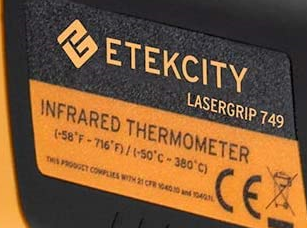appropriate metric is kW/Btu cooling at target temp.
rating ones chillers in litres is nonsense.
Start here:
Exactly. China rates chiller is Reservoir Volume. They assume you see -80c and don’t ask questions, when in reality that -80c chiller have might have .3kW at -80, which is nothing, pretty much worthless lol.
Loving that “green energy”
explain what’s going on here
Cross flow heat X
Dry ice killer
Then is it really dead?
Only time will tell… ![]()
But then again, you are technically cleaning the environment just to dump on it once again - by releasing the captured CO2 that had previously been cleaned up. To me, this does not make sense to begin with…
Thoughts?
Oh I def agree with you on the fact that dumping all that co2 into the environment sucks. But I don’t agree that using dry ice /co2 has been dead for years when it’s still an industry standard.
It may be dead in your world though.
Unfortunately this is true… Dumping CO2 is currently “the way” otherwise known as the “industry standard”, but why? Does not anyone have any new ideas? Something that no one has done before?
I guess it was said to be the “cool” thing to do at the time, and might have made sense from a marketing standpoint, but when it comes to making equipment, it should at least be environmentally friendly to some degree. It was a simple solution to cutting the up-front cost of an extraction system. The cost of the chillers alone are typically half of the total system cost. So if you can remove chillers - by using CO2 / dry ice - you effectively remove this cost up front.
It is then on the back-end that it adds up. How much is a typical year in CO2/dry ice? $100k? $200k? More? A chiller is typically less than that, but then you eat it in power consumption and repairs so it almost balances out over the expected years of operation.
Perhaps it is not yet “dead”, but I feel it is in the stages there of.
We know why everyone uses dry ice and the economics behind why they made the decision to do it. It’s a no brainer man.
If money was infinite (which it never is for start ups) then everyone would buy chillers.
I love your chilling system…. But why beat around the bush here creating a narrative to plug your chilling system. Put a price tag on your chilling system for the industry to see and people can actually chew on the price and make the decision….
This is a really weird angle to take that makes no sense at all to me. I never used dry ice because it was “cool”, I did it because it’s what got the job done.
Not here for that, everyone knows about it now. Just conversation about the topic. Thx for the offer though. Currently we have decided to only offer it with our systems. The stand-alone has been put on the shelf.
Sry not aimed at you my guy… that was someone else’s theme song.
That’s heartbreaking news. ![]()
So if the concern is the environment, and you have an alternative “green” solution for temp control, but its completely proprietary and not even available outside of spending 100’s of K for a full system?
For the environment, wallet and labor, I’d love to use propane for cooling, heating and pressure pushing, but its a lot more complicated than dumping some dry ice on metal.
Surely this can be solved by the community. I know when I was kicking the tires for some DX cooling action there was some awesome response and help from the highly knowledgeable members.
With the refrigerant pressures seen when the system is idle at 110 f plus outside temps, selling a DX system to fit other system hexs and jackets is a lawsuit waiting to happen.
i have been playing with self (propane) refrigeration in my “active assisted passive” butane machine.
cold injection/generation on demand, hot gas on demand.
Can you lay this out for us more @downtheterphole whats the setup look like?
it’s a passive loop and an active loop working together

